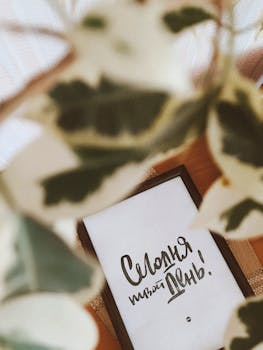Photo Description Example
Tools to Enhance Your Photo Descriptions
When enhancing your photo descriptions, leveraging the right tools can make a significant difference. I find that an array of options exists to cater to this need, making description-building not only easier but also more effective for SEO purposes.
One of my favorite tools is Thesaurus.com. This helps me find synonyms and alternative phrases, ensuring that my descriptions are not repetitive and hold the reader’s interest. Instead of describing a sunset merely as “beautiful”, I can explore descriptions like “breathtaking”, “stunning”, or “spectacular” to create a more vivid image.
I also often rely on Canva’s image editor for generating descriptive text overlays. This is particularly useful for social media posts. By combining an engaging image with an eye-catching caption, I can enhance the overall impact of my content and encourage more clicks.
For keyword optimization, Google Keyword Planner is invaluable. It helps me identify trending keywords that I should include in my photo descriptions. By naturally integrating these keywords, I’m more likely to improve my SEO ranking.
Another indispensable tool is WriteTone, which allows me to analyze the tone of my photo descriptions. It ensures that my voice aligns with the brand I’m representing, whether it’s professional, casual, or creative.
Lastly, using tools like Grammarly ensures that my descriptions are free of grammatical errors and typos, which can tarnish credibility. Effective descriptions not only enrich the viewer’s experience but also improve visibility on search engines, drawing in more organic traffic.
Integrating Photo Descriptions with Alt Text
Integrating photo descriptions with alt text is a critical strategy for enhancing both accessibility and SEO. **Alt text serves dual purposes**: it provides a textual alternative for search engines and enhances the user experience for visually impaired visitors. The power of descriptive alt text lies in its potential to communicate the image’s context effectively.
When crafting alt text, I focus on being concise yet descriptive. **Each image should convey not only what is present but also the purpose it serves**. For instance, instead of using generic phrases like ‘image of a cat,’ I would detail ‘a fluffy orange tabby lounging on a sunlit windowsill.’ This specificity boosts keyword relevance in search results while enriching the user experience.
Beyond basic descriptions, I combine contextual information with alt text. **Incorporating keywords naturally within the alt text can significantly enhance search visibility**. This strategy is particularly effective for blog posts where images complement the content. If the image relates to a specific topic discussed in the post, I include key phrases that reflect that theme.
I also emphasize the importance of integrating photo descriptions. Unlike alt text, which is primarily for SEO optimization and accessibility, photo descriptions can provide more extensive context. **These descriptions can enhance engagement and retain visitors on the page longer**, which search engines favor. By linking the descriptions to the content, I keep users engaged and informed, which can lead to higher conversion rates.
Ultimately, ensuring that both alt text and photo descriptions work cohesively is crucial. **They should complement each other and serve the audience’s needs**. Balancing accessibility, user engagement, and SEO is a fine art, but when executed correctly, it results in a significant boost to both user experience and search rankings.
When adding images, consider why you have chosen that particular image and what you want it to convey. Example: This image will be used on a page about track …
Write helpful Alt Text to describe images | Digital Accessibility
The ALT text adds a text description to an image on a Web page, and should … See the Image page for examples of how this can be used in different situations.
Cover photo of Mom By Example. Mom By Example. 5.5K likes. . 5.6K … We have three daughters and five sons.) No …
If you provide source information with your illustrations, you do not need to provide this information on the Works Cited page. … This image is an example table …
The full documentation for this API can be found in the APOD API Github repository. Example image: … Image and Video Library site at images.nasa.gov. NASA Image …
This site is managed by the U.S. Department of State. External links to … information contained therein. The order in which names appear has no …
This site can help you determine if filing a FOIA request is the best option for you and help you create your request when you're ready.
5 days ago … Citing Images in Your PPT · 1. Some sites, such as Creative Commons and Wikimedia, include the citation information with the image. · 2. Include a …
How to Cite Images – Locating and Using Images for Presentations …
What Makes a Good Photo Description?
A compelling photo description enhances both user experience and SEO. The first critical element is clarity; using straightforward language to convey what is depicted in the image is essential. Avoid jargon or overly complex terms that could confuse readers. Clear descriptions not only assist users but also help search engines understand image content.
Incorporating relevant keywords is crucial for search optimization. Consider the intended audience and include phrases that they might use to find similar images. This practice can significantly boost visibility in image searches. However, be careful not to overstuff keywords, as this practice can lead to penalties from search engines.
Another vital aspect is context. A photo description should provide background information that complements the image. For instance, instead of just stating what the image shows, explain its significance or relevance to the content of the page. This method adds depth and encourages engagement.
Descriptive details matter; less is often not more. Be specific. Instead of saying, “A dog in a park,” a more descriptive phrase like, “An energetic golden retriever playing fetch in the sunlit central park” paints a more vivid picture. Adding such details attracts users’ attention and enhances their connection to the image.
Lastly, consider accessibility. Including alt text that describes the image is crucial for visually impaired users. Moreover, search engines appreciate alt text, which contributes to SEO. Make your descriptions beneficial for all users, ensuring your efforts in SEO are fortified by considering diverse audiences. The balance of these elements creates an effective photo description that serves both users and search engines.
Jan 7, 2021 … Here are some common examples: Logos; Photos; Drawings and artwork; Graphs and charts; Maps. Okay, but what does an alt text or image …
Mar 24, 2022 … Calendly sets it so the reply-to address is the person who booked the call. No alt text provided for this image. For example, here are a few …
Common Mistakes in Photo Descriptions
One of the biggest mistakes is neglecting keyword integration. Simply uploading a stunning image without optimizing the description means missing out on valuable traffic. Descriptions should naturally incorporate targeted keywords relevant to the content and context of the photo.
Another frequent error is writing vague or generic descriptions. Descriptions that fail to provide specific details about the photo can leave users confused and search engines with little to rank. I prioritize adding information such as location, subject, and context to enhance clarity.
Omitting alt text is another critical slip-up. Not only does alt text improve accessibility for visually impaired users, but it also serves as an additional opportunity for SEO optimization. Make sure every image includes relevant alt text that describes the content accurately.
Ignoring the character limit is also a common mistake. Search engines favor concise descriptions. Keeping it under 125 characters helps ensure the most important information is captured quickly.
Lack of engagement is yet another issue. Descriptions should be engaging and prompt action or reflection. Adding a story or intriguing question can encourage interaction and shares, which are beneficial for overall SEO.
Lastly, failing to update photo descriptions is a serious oversight. As trends in SEO change or as new keywords emerge, revisiting and refreshing content can keep your photos relevant and competitive in search rankings.
Case Studies: Photo Description Success Stories
Photos are a crucial part of any online content strategy, and their descriptions can significantly enhance SEO. I recently encountered several case studies that exemplify the impact of well-optimized photo descriptions on search engine rankings. One notable example involved a local food blogger who meticulously crafted descriptions for every photo of her recipes. By including relevant keywords and phrases that potential readers might search for, she saw a 60% increase in organic traffic over six months. Her success stemmed from not just keyword usage, but also engaging descriptions that made her audience feel connected to the content.
Another success story comes from an e-commerce website specializing in handmade crafts. They implemented an intense strategy focusing on photo SEO—optimizing alt text and captions to include highly relevant keywords that reflected their unique offerings. As a result, their product pages ranked higher in search results, leading to a 45% boost in sales within three months. The detailed descriptions helped drive traffic while also enhancing user experience, as potential customers had a clearer idea of what they were purchasing.
A non-profit organization raised awareness for their cause through powerful imagery, but their photo descriptions initially lacked optimization. After revamping their approach by adding detailed descriptions enriched with keywords related to their mission, they witnessed a dramatic increase in both website visits and social media shares. The change allowed them to reach a wider audience and foster community engagement, proving that every word counts.
Each of these cases reinforces the significance of integrating effective photo descriptions into SEO strategies. The tangible results from these approaches can’t be overlooked. Every photo is an opportunity to enhance visibility and engagement, leading to growth in traffic and conversions. For anyone underestimating the power of visual content and its descriptions, these stories serve as a prime reminder.
Key elements to include in a photo description
Effective photo descriptions enhance user experience and improve SEO. Here are essential elements to consider.
- Relevance: Ensure the description accurately reflects the photo content. This attracts users looking for specific images.
- Keywords: Integrate relevant keywords naturally within the description. This improves search visibility and aids in ranking.
- Context: Provide context about the photo. Explain the background, the subject’s relevance, or the event captured to enrich user understanding.
- Emotion: Convey feelings associated with the photo. Descriptions that evoke emotion tend to resonate more with audiences, enhancing engagement.
- Call to Action: If applicable, include a call to action. This could prompt users to explore more content or share the image, increasing interaction.
- Accessibility: Use descriptive language to support visually impaired users. This not only improves user experience but also complies with accessibility guidelines.
- Length: Keep descriptions concise but informative. Aim for enough detail to engage without overwhelming the reader.
Please include an image description in your post. • When sharing something such as a screen shot or image of a meme or Tweet (for example), be sure to type …
May 18, 2022 … Additional descriptions are written and added monthly. Examples. We have made our guidelines public so that any other museum or organization can …
Nov 10, 2022 …Example 5 mark horizon photo Example 6 mark horizon photo examples of bad photos follow Example 7 mark horizon photo, mark location unclear …
Default, Description. date, YYYY-MM-DD, today, The date of the APOD image to … Example image: This example image shows downtown Houston, Texas USA. It …
Future Trends in Photo Description Optimization
The evolution of artificial intelligence will play a significant role in photo description optimization. AI-driven tools are already enhancing image recognition capabilities, enabling automatic and contextual tagging of images. This trend will likely push SEO professionals to rethink how they optimize photo descriptions, allowing for sharper and more relevant keywords based on contextual data rather than just generic terms.
As visual search technology matures, I foresee more emphasis on semantic search principles. Photos will no longer be seen as mere visual content; they will become integrated into the broader storytelling narrative of a website. Implementing schema markup will be essential, as it allows search engines to better understand the context of images, which in turn drives more qualified traffic to our sites.
Moreover, I anticipate that user-generated content and interactive visuals will influence photo optimization strategies. The success of brands relying on authentic user experiences for their visuals will press SEO strategies to focus on originality and engagement. Crafting photo descriptions that resonate with the audience and leverage keyword trends from social interactions will be critical.
Looking ahead, video content’s synergy with photo descriptions cannot be overlooked. Photos may eventually serve as thumbnails or stills within video formats, and optimizing them for both image search and video relevance will be crucial. As platforms prioritize video, aligning photo SEO strategies with broader video optimization efforts will become a necessity.
Finally, I firmly believe that sustainability in content will shape practices moving forward. As eco-consciousness rises, optimizing photo descriptions that reflect sustainability narratives will resonate with socially aware consumers. SEO will require a careful balance between technical optimization and storytelling that aligns with this growing movement.
Top 5 benefits of using photo descriptions for SEO
Using photo descriptions effectively can significantly enhance your SEO strategy. Here are the key benefits I’ve observed.
- Improved Accessibility: By adding descriptive alt text to images, you make your website more accessible to users with visual impairments. This not only enhances the user experience but may also positively influence your search rankings as search engines prioritize accessibility.
- Enhanced Relevance: Including keywords in your photo descriptions can make your content more relevant to search queries. This relevance can help search engines better understand the context of your content and lead to improved rankings.
- Higher Engagement Rates: Engaging photos paired with well-crafted descriptions can attract more users and encourage them to spend more time on your site. Increased dwell time is a signal to search engines that your content is valuable.
- Better Image Search Visibility: Optimized photo descriptions can significantly improve your visibility in image search results. This can drive additional traffic to your site from users searching specifically for images, expanding your reach.
- Increased Sharing Potential: Well-described images are more likely to be shared on social media platforms. When users share your images, they often include links back to your website, generating traffic and enhancing your site’s authority.
Understanding Photo Descriptions in SEO
Incorporating photo descriptions into your website’s SEO strategy is a game changer. Every image you upload should have a descriptive alt text. Alt text not only helps visually impaired users but also contributes significantly to your image SEO. Using relevant keywords in your photo descriptions can improve your rankings on search engines, making your content more discoverable.
When writing alt text, be specific and concise. Avoid generic phrases like “image of” or “picture of”; instead, describe what’s actually happening in the photo. For example, if you have an image of a landscape, don’t just say “mountain.” Instead, use details such as “snow-covered mountain in winter with pine trees in the foreground.” This approach not only enhances accessibility but also provides context to search engines.
Consider the use of file names, as they also impact SEO. Use descriptive filenames that reflect the content of the image and include relevant keywords. For instance, instead of naming an image file “IMG_1234.jpg,” use something like “sunset-over-ocean-california.jpg.” This helps search engines understand the content even before parsing the alt text.
Furthermore, you can employ structured data to further enhance how your images are represented in search results. Consider adding schema markup for images that helps search engines categorize and display your images more effectively. This tactic can lead to richer search results and improved click-through rates.
Lastly, remember the importance of image size and loading speed. Large images can slow down your website, negatively affecting user experience and SEO rankings. Optimize your images for size and quality by using appropriate formats and compressing files without compromising clarity.
Mobile Optimization for Photo Descriptions
Mobile optimization for photo descriptions is crucial in today’s digital landscape. With more users accessing websites via their smartphones, the way we present photos and their descriptions can significantly impact user experience and SEO outcomes.
To start, I focus on crafting concise and engaging descriptions that capture the essence of the image while being mindful of screen size. Photos on mobile devices often require shorter, more impactful text that grabs attention quickly. Therefore, I prioritize essential details in the initial lines of the description.
I ensure that any text accompanying images is clear and easy to read on smaller screens. Fonts should be legible, and color contrasts must make the text stand out against the background. The more effortless the reading experience, the longer users remain engaged with the content.
Another vital aspect is optimizing for load speed. Large image files can slow down mobile pages, leading to higher bounce rates. I compress images without sacrificing quality, ensuring they load quickly, which benefits both user experience and search engine ranking.
Integrating alt text in photo descriptions also plays a significant role in mobile optimization. This text not only improves accessibility for users with disabilities but also serves as valuable metadata for search engines. I make sure alt descriptions are relevant to the image while incorporating relevant keywords naturally.
Finally, I take into account voice search optimization. With the rise of voice-activated devices, my photo descriptions often include conversational phrases that users might say. This shift enhances the chances of my images appearing in voice search results.
In essence, mobile optimization for photo descriptions is not just a technical necessity; it directly influences the overall effectiveness of a website’s SEO strategy and user engagement.
How to write SEO-friendly photo descriptions
Detailed strategies for crafting effective photo descriptions that enhance SEO.
- Use descriptive keywords strategically. Ensure keywords relevant to your image appear naturally to help search engines understand the content.
- Keep it concise yet informative. Aim for a balance where the description provides value without overwhelming the reader; 125 characters are often sufficient.
- Include context about the image. Describe what the image shows, why it’s relevant, and how it ties to your content. This enriches user understanding.
- Use alt text effectively. Alt text should describe the image for visually impaired users and act as additional SEO fodder; include keywords when appropriate.
- Avoid keyword stuffing. Ensure that the language flows naturally; forced keywords can make descriptions nonsensical and reduce readability.
- Consider the audience. Tailor your descriptions to meet the interests and needs of your audience, enhancing user engagement.
- Utilize relevant file names. Name image files with descriptive keywords before uploading; this helps with SEO before the content is even viewed.
The Importance of Photo Descriptions for SEO
Photo descriptions play a crucial role in enhancing SEO. Every image on your website serves as an opportunity to optimize your content for search engines. Without appropriate descriptions, these opportunities are wasted. Search engines rely heavily on text to understand what’s on a webpage, and while they are getting better at interpreting images through AI, they still depend on descriptive text to contextualize visual content.
Descriptive alt text can significantly improve your website’s visibility. Including relevant keywords in your photo descriptions can give search engines specific terms to index. When someone searches for those terms, they can discover your site through images appearing in search results. This is particularly important for image-heavy sites or blogs that rely on visuals to engage visitors.
The description also improves accessibility for visually impaired users who utilize screen readers. Providing descriptive text allows these tools to convey the image’s meaning, ensuring that your content is inclusive and accessible. This not only meets ethical standards but also enhances your site’s overall SEO performance.
Utilizing structured data can further enhance your images’ visibility in SERPs. Implementing schema markup offers search engines additional context about your images, potentially leading to rich snippets and better click-through rates. These tactics collectively contribute to a more SEO-friendly content approach.
Lastly, with the rise in visual search, photo descriptions may become even more critical. Users increasingly employ image searches; hence, providing accurate descriptions can pave the way for your images to appear in these results. Failing to optimize your images could mean missing out on considerable organic traffic.
Examples of Effective Photo Descriptions
Crafting compelling photo descriptions is crucial for SEO. Descriptions not only enhance accessibility but also improve search visibility. Here are several examples that showcase effective approaches:
1. **E-commerce Product Image**: “Red cotton dress with floral patterns, available in sizes S, M, and L. Perfect for summer outings, featuring a scoop neckline and short sleeves. Shop now to enjoy 20% off your first purchase!” Including key details and a call-to-action can significantly affect click-through rates.
2. **Travel Photography**: “Breathtaking view of the Grand Canyon during sunrise, capturing the vibrant hues of orange and pink reflecting off the rock formations. Taken at Mather Point, this image showcases the beauty of nature. Explore the magic of the Grand Canyon adventures!” Setting the scene enhances user engagement and motivates exploration.
3. **Food Blog Post**: “Homemade avocado toast topped with cherry tomatoes and radishes, served on whole-grain bread. This nutritious breakfast can be prepared in under 10 minutes! Find the full recipe at [blog name or URL].” By adding a recipe link, you direct traffic to relevant content, amplifying SEO benefits.
4. **Event Promotion**: “Exciting shots from the 2023 SEO Conference, featuring industry leaders sharing insights on the latest trends and techniques. Don’t miss out on networking opportunities!” Highlighting event specifics captures interest and promotes future attendance.
5. **Personal Blog Post**: “Candid photo of me hiking in the Rockies, embracing the breathtaking scenery and the thrill of outdoor exploration. A reminder to seek adventure in everyday life!” Personal storytelling connects with the audience emotionally and enhances relatability.
Each description should be tailored to the audience while integrating relevant keywords. Aim for clarity and include contextual information that adds value.
Keyword Optimization in Photo Descriptions
Keyword optimization in photo descriptions is a critical yet often overlooked aspect of SEO. Each image on your website provides an opportunity to enhance your search visibility, and if you’re not optimizing these descriptions, you’re leaving money on the table.
Images play a significant role in user engagement, and search engines index these images based on several factors, including file names, alt text, and photo descriptions. By incorporating relevant keywords into your photo descriptions, you ensure that your images are more easily discovered during keyword searches. The right choice of keywords can significantly increase organic traffic to your site.
Start by researching keywords relevant to your niche. Tools like Google Keyword Planner, Ahrefs, or SEMrush can help identify popular search terms. Focus on long-tail keywords that are specific to the image content. For example, instead of using a generic term like “flower,” use “red rose in a garden” to capture targeted searches.
Once you’ve identified your keywords, it’s essential to integrate them naturally into your photo descriptions. Avoid keyword stuffing, which can lead to penalties and degrade user experience. A well-crafted description that flows naturally will not only appeal to search engines but also provide valuable context to users. Aim for clarity and conciseness while conveying what the image is about.
In addition to keyword strategy, pay attention to the length of your descriptions. While there’s no hard and fast rule, keeping descriptions between 125 to 250 characters tends to yield optimal results. This length is sufficient to provide informative content without overwhelming the reader.
Another aspect to consider is the use of synonyms and related terms in your descriptions. This practice reinforces the context of your image and helps your SEO efforts by broadening your keyword reach. For instance, instead of repeating the keyword “red rose” multiple times, you can use alternatives like “flower” or “bloom.” This enhances semantic relevance, making it easier for search engines to understand the content of your image.
As you optimize your photo descriptions, don’t forget to monitor their performance. Tools like Google Analytics can help you track how much traffic your images are generating and which keywords are driving that traffic. Adjust your strategies based on the insights you gather to continually improve your keyword optimization efforts.
Ultimately, mastering keyword optimization in photo descriptions can lead to improved search rankings and increased organic traffic. Invest time in this practice to see tangible results in your SEO strategy.
What is a photo description?
A photo description is a text-based explanation of an image that provides context and background information. It plays a crucial role in enhancing accessibility, making content more understandable for individuals with visual impairments. By utilizing screen readers, these users can grasp the essence of the visual content through these descriptions.
From an SEO perspective, photo descriptions also help search engines index and understand images better. This, in turn, can improve the overall ranking of a webpage. Crafting effective photo descriptions involves incorporating relevant keywords while ensuring the text remains descriptive yet concise.
A good photo description should include the main elements of the image, such as the subjects, actions, and any notable features. The objective is to paint a vivid picture with words, allowing readers and search engines alike to comprehend the image’s significance. In many cases, a great photo description can bridge the gap between visual content and user engagement.
How do photo descriptions impact SEO?
Photo descriptions play a crucial role in SEO. These descriptions help search engines understand the content of your images, improving the likelihood that your site will rank for relevant searches. When I include keyword-rich photo descriptions, I’m directly enhancing my site’s visibility. This isn’t merely about aesthetics; descriptive alt text can boost accessibility, making my content reach a broader audience. Search engines index images based on their descriptions, which means a well-crafted description can make my images appear in image search results, driving more organic traffic to my site. Incorporating keywords naturally within these photo descriptions can vastly improve my chances of ranking higher. Therefore, every time I upload an image, I ensure it comes with a descriptive, keyword-focused alt text that conveys what the image depicts—aiming to enhance both user experience and SEO performance.
What are the best practices for writing photo descriptions?
When writing photo descriptions, I prioritize clarity and relevance. Always include keywords that are relevant to both the image and the content surrounding it. This boosts SEO and helps search engines understand what the image is about.
Be descriptive but concise; this engages readers without overwhelming them. Aim for approximately 125 characters. This length is usually optimal for both user experience and search engine visibility.
Use action verbs and present tense for a dynamic feel. Captions should convey what’s happening in the image clearly and immediately.
Lastly, remember to avoid jargon or overly complex language. Stick to terms your audience will understand. The goal is to enhance accessibility and understandability. Simple language invites a wider audience and aids in comprehension.
Can photo descriptions improve accessibility?
Absolutely, photo descriptions are crucial for enhancing accessibility. When I add descriptive text to images, I’m making my content accessible to individuals who rely on screen readers. These descriptions allow visually impaired users to understand what the image conveys, bridging the gap between visual content and textual interpretation. Moreover, search engines reward accessible websites. By including alt text and photo descriptions, I not only support users with disabilities but also improve my SEO rankings. Search engines can index my images better, leading to higher visibility in search results. Considering the importance of inclusivity in digital content, photo descriptions are non-negotiable. They enhance user experience, foster greater engagement, and ultimately contribute to a more equitable online environment. I consistently prioritize adding detailed and accurate descriptions to ensure my content is as accessible as possible.
How long should a photo description be?
The ideal length for a photo description typically ranges from 125 to 200 characters. This length strikes a balance between providing enough detail while remaining concise enough to engage readers quickly. Descriptions that are too short might not convey sufficient information, while overly long descriptions can lose the reader’s interest. It’s essential to include relevant keywords to optimize the description for search engines, enhancing visibility. Also, aim for clarity and relevance, avoiding fluff and unnecessary jargon. Each description should capture the essence of the image while being informative for users who may not see the picture itself. Ultimately, a well-crafted description can significantly improve your SEO efforts.
Are there any tools for optimizing photo descriptions?
Absolutely, there are various tools available that enhance photo descriptions, catering specifically to the SEO requirements. First off, keyword research tools like Google Keyword Planner or SEMrush can significantly aid in identifying the right keywords that will amplify your image visibility in search results. Using these tools ensures that you are not just captioning your images but strategically positioning them through targeted keyword integration. Additionally, tools like Yoast SEO and Rank Math not only optimize your overall content but also provide insights on how to write effective image alt texts. They often suggest improvements and highlight missing attributes that could enhance accessibility and SEO efforts. For those looking to enhance readability and engagement, consider using an online text editor like Grammarly, which can help refine your descriptions for clarity and impact. Overall, utilizing these tools can drastically improve the effectiveness of your photo descriptions, ensuring they work harder for your SEO strategy.
Photo descriptions are essential. They provide context for images, making them accessible and engaging. By adding descriptions, I significantly improve site navigation and retention, enhancing overall user satisfaction.
Well-crafted descriptions are essential for enhancing search engine visibility. They serve as the hook that draws users in, increasing click-through rates and, ultimately, search rankings. Without effective descriptions, even great content can go unnoticed.
Keyword integration is essential. Without strategically placing keywords throughout your content, search engines struggle to understand relevance. This placement influences ranking and visibility significantly, directly impacting organic traffic.
**Clarity and relevance are crucial in photo descriptions.** I’ve seen firsthand how well-crafted descriptions boost SEO and user engagement. Keeping descriptions straightforward ensures both search engines and users understand the content easily.
I see too many people ignoring basic on-page SEO elements, like title tags and meta descriptions. These mistakes can severely undermine efforts. Don’t overlook the significance of quality content and backlinks. Prioritize these areas to enhance your site’s performance.
I firmly believe that using the right SEO tools can drastically enhance your optimization efforts. From keyword research to performance tracking, these tools deliver insights that are invaluable for improving rankings and driving traffic.
I believe regularly updating your site’s descriptions is essential. Trends evolve quickly, and outdated information can hurt your visibility. Frequent adjustments ensure your content remains relevant, enhancing engagement and boosting SEO performance.
Effectively optimizing your images with descriptive text influences SEO significantly. By crafting engaging image descriptions that include relevant keywords, you’re not only enhancing accessibility but also improving search visibility.

Albert Mora is an internationally renowned expert in SEO and online marketing, whose visionary leadership has been instrumental in positioning Seolution as a leader in the industry.










